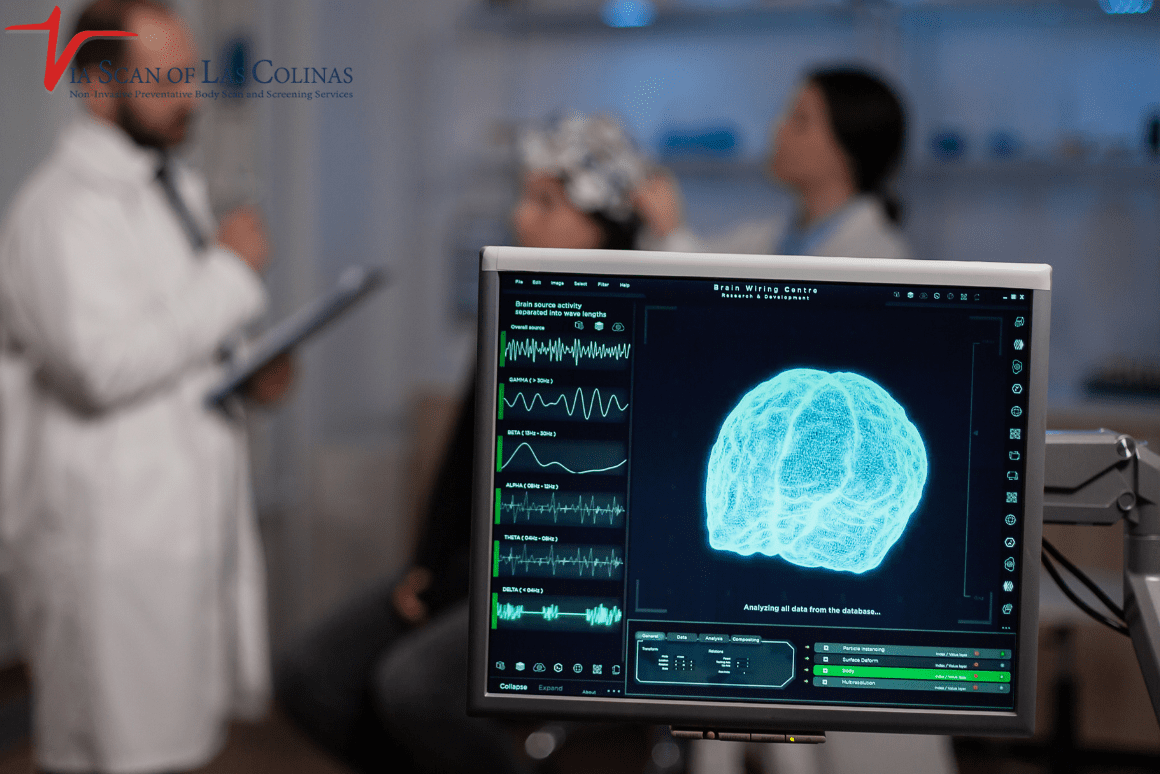Your brain is the supreme command station, coordinating everything from your morning coffee routine to complex problem-solving at work. When medical practitioners propose that patients and their families should get a brain angiogram, it is common to find that there is a sense of curiosity and fear. When most people hear the term ” brain procedure, the first thought that comes to mind is worst case, but the current angiography is a well-established tool that can give valuable information about the health of the brain.
As a professional radiographer, I will use this blog to provide clear facts about brain angiograms, covering their purpose, safety profile, and recovery expectations, so you can make an informed decision and approach your healthcare with confidence, not fear.
What is the severity of a brain angiogram procedure?
A brain angiogram is not a high-risk procedure but a standard diagnostic procedure. Specialists monitor it since it is an invasive procedure. The process entails the placement of a small catheter in a blood vessel. Then the catheter is passed to the arteries of the brain with the injection of contrast dye to produce a detailed image. Although this is complicated to hear, the brain angiograms with modern methods and sophisticated imaging technology have become highly specific and controlled.
Most patients are shocked to learn that cerebral angiograms are part of other specialised imaging services, such as CT scans. The trick lies in the possession of trained medical experts who know the vascular anatomy and operate the latest equipment to achieve the best results with minimal possible complications.
Why should I have a cerebral angiogram?
Cerebral angiograms are diagnostic in nature only in some cases. On other occasions, they enable medical practitioners to treat some ailments.
There are various purposes for which providers use cerebral angiograms. One of them is to identify or rule out blood vessel disease in your brain, such as:
- Brain aneurysm.
- Atherosclerosis.
- Arteriovenous malformation.
- Dural venous fistula.
- Vasculitis.
- Tearing of the inner part of an artery (when it tears).
- Stroke (blood clot).
Other uses include:
- Head or neck: To measure your arteries in your head and neck before brain surgery or other medication.
- To understand the relationship between blood vessels and a brain tumour, specifically how the blood vessels supply the tumour.
- To communicate with the abnormalities providers about other imaging tests, such as a CT scan.
What are the risks of having a cerebral angiogram?
Like any medical procedure which requires contrast agents and the insertion of catheters, brain angiographs do have certain risks, which I always explain to patients in detail.
- Minor bleeding (or bruising at the site of catheter insertion) is the most frequent and happens in about 2-3% of cases; it usually fades rapidly with adequate treatment.
- More severe and less common complications include allergy to contrast dye, damage to blood vessels, and short-term changes in kidney activity.
- Stroke is an extremely low risk – less than 1 out of 100 – but the most worrisome potential complication in connection with a cerebral angiogram.
- Blood clot, infection, or spasm of arteries may also occur, but are uncommon when correct technique and sterile conditions are used.
Through ViaScan, which provides complete imaging services such as whole body scans and specialised vascular studies, the presence of teams ensures that these risks are minimised by patients selectively chosen and procedural techniques carefully selected.
Does a brain angiography hurt or harm?
The level of comfort that patients experience when undergoing brain angiograms is actually pleasant to the majority of patients. I clarify that local anaesthesia does not cause pain where the catheter is inserted, and light sedation helps the patients relax during the procedure. Most of the pain occurs when one lies down in a prolonged position, rather than from the pain of the angiogram itself.
Patients do not experience a lot of sensation during the insertion and steering of the catheter, as blood vessels do not carry any pain receptors. Others feel a warmth when contrast dye is injected, which I term as being more like a quick passing flush or a warm wave. Cerebral angiograms are surprisingly well-tolerated, since the brain tissue itself is not able to sense the catheter.
Cerebral angiograms are not so scary when done at a certified imaging centre with qualified personnel, such as ViaScan, who also do other tests such as lung scans, heart scans and other diagnostics.
What is the duration of brain angiogram recovery?
A brain angiogram recovery is normally quick and easy, unlike patients who are initially surprised to hear of the procedure. Many individuals can feel normal within 24-48 hours. However, the initial day should be taken easy, to ensure proper healing at the point of catheter insertion.
Patients are required to spend 4-6 hours in a straight position immediately after the procedure to avoid bleeding at the catheter site of entry into the artery. Medical staff members examine the critical rates and the place of insertion during this time span of monitoring. Many of the patients can eat, drink and use bathroom facilities normally, but heavy lifting and intense activity should be avoided for approximately a week.
Is a brain angiogram stroke-causing?
Whereas stroke is a complication that may result from brain angiograms, the risk is extraordinarily low, less than 1 per operation. The latest catheter styles, better contrast agents, and real-time imaging guidance have significantly decreased this risk, which is already low.
Stroke occurs when thrombosis develops around the catheter or when fragments of plaque break off the walls of arteries during cerebral angiograms. Nonetheless, mature interventional radiologists resort to blood-thinning drugs and careful methods to avoid the development of clots, whereas innovative imaging facilitates the detection and avoidance of problem areas.
Where can I get my brain angiogram?
It is important to understand that the facility where you undergo your cerebral angiogram is the most critical factor in ensuring your safety and peace of mind. ViaScan’s experienced team of imaging professionals is trained in advanced diagnostic procedures, providing the latest and most compassionate patient care to achieve the best results in the brain angiograms we perform.
The difference with ViaScan is that we provide a total solution to diagnostic imaging. In addition to cerebral angiograms, we offer a comprehensive range of imaging services, including whole body scanning, preventative scanning, specialised CT scanning, lung scanning, heart scanning, and bone density testing. This depth of knowledge enables our radiologists and technologists to understand how brain angiogram results correlate with general health, providing additional diagnostic information.
Choose Our CT Angiogram Scan
Early Detection Saves Lives!
-
- Accurate
- Quick Result
- Affordable

Conclusion
Nevertheless, knowing the facts concerning brain angiograms, you can be much less concerned about the significance of this medical test. Although none of the medical tests are fully safe, a cerebral angiogram is secure and is a common practice performed by qualified doctors using advanced technology.The key factor to keep in mind is that brain angiograms aid in the identification of severe brain issues that may be life-threatening had they not been attended to. The test-related minor risks are typically far less than the risk of being unaware of what is amiss with the blood vessels in your brain.
This small inconvenience is worth it for the health of your brain. A brain angiogram, with proper preparation and proper medical attention, can provide you and your family with the right information on the health status of your brain and the future peace of mind.








